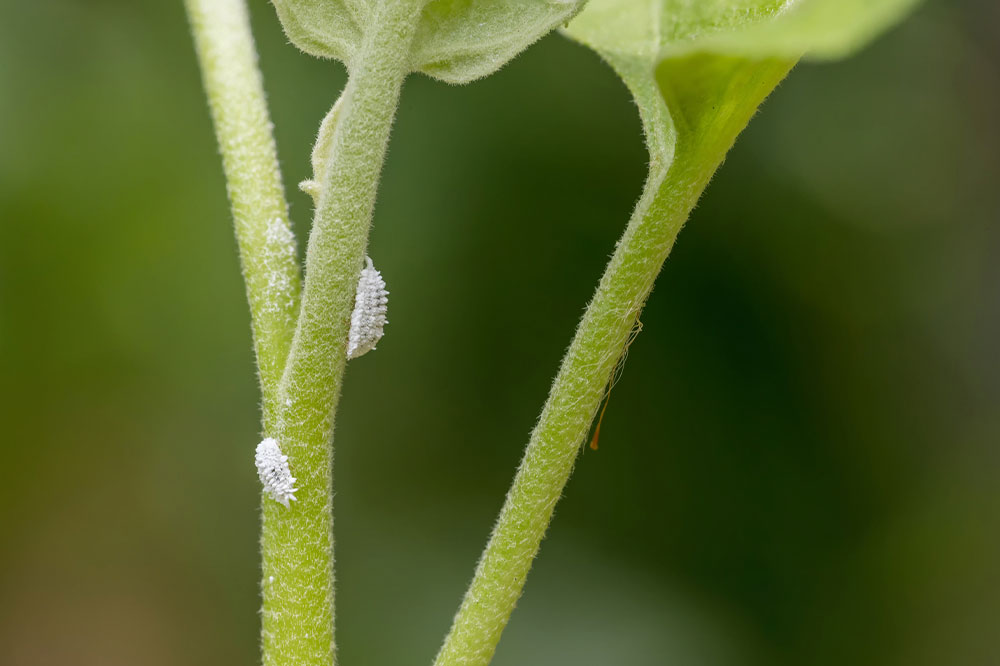6 Ways to Deal With a Mealybug Infestation
Mealybugs are tiny insects that feast on small plants. The bugs are not longer than 1/10th of an inch when they hatch. With a gray or off-white color and an oval shape, the insects resemble small wads of cotton. The females can lay hundreds of eggs at a time, so an infestation can get out of hand if not addressed in time. Here is all you should know about dealing with a mealybug infestation:
Things to know
Before learning how to repel mealybugs, you should know how to identify an infestation. These pesky pests generally thrive on new shoots, buds, stems, or even under the leaves.

Ways to eliminate mealybugs
The size of the infestation will determine the most effective remedy.
Use isopropyl solution
A potent remedy for dealing with a mealy bug infestation is a homemade isopropyl spray. All you need is a cotton ball dipped in the isopropyl that you can apply directly on the bugs. Once the bugs succumb to the rub, simply scrape them off the plant leaves. The residue of the solution on the leaves also lowers the risk of re-infestation. You can repeat this process a few times to ensure the bugs are completely eliminated. Always wear gloves while dealing with chemical compounds to avoid allergic reactions. You can find isopropyl at your local pharmacy, as it is commonly used as an antiseptic for cleaning and treating wounds.
Make an insecticidal soap solution
Mix some regular home dish soap with water (1 spoonful should be enough for a gallon of water) and spray the solution all over the plants. Bugs cannot survive the soapy solution and fall off quickly. Make sure you spray the underside of the leaves as well because the bugs can simply move to the bottom to protect themselves from the spray. Also, don’t use excessive quantities of the spray, as fragile plants may not be able to withstand the soap.
Introduce predatory insects to the garden
One of the less invasive methods of tackling a mealybug infestation is by introducing predators that can hunt and feast on mealybugs. You can find many predatory insects like a beetle called “mealybug destroyer”, lace bugs, and parasitoid wasps. These insects are the best repellents for mealybugs as they do not harm the affected and healthy plants. If you do not want to overwhelm your beautiful garden with too many pesticides and chemical sprays, consider introducing a few predatory pests that actively keep the infestation at bay.
Grow or set up plants that repel mealybugs
Mealybugs do not necessarily go after every single plant in the garden. So, you can place or grow a few plants that repel mealybugs in your garden and prevent an infestation. Common thyme, oregano, lavender, basil, garlic, lantana, and anise are some of the plants that repel mealybugs. The varieties are easy to maintain and can be placed across the garden to protect vulnerable plants from a mealybug infestation.
Use a neem oil spray
Neem is one of the best repellents for many types of pests, including mealybugs. There are two simple ways you can use neem: You can make a homemade neem oil and dish soap solution by adding both ingredients to a gallon of water, or you buy a spray kit with a readymade solution. For instance, Emily’s Naturals Neem oil plant spray kit features cold-pressed neem oil sachets, castile soap sachets, and a DIY applicator kit. Both techniques are natural ways to deal with pests so you can carry them out without polluting the environment.
Consider systemic pest control
When all else fails, you may have to rely on synthetic pesticides. If the mealybugs infest a big patch of the garden and threaten to destroy healthy plants rapidly, you may require insecticides or pesticides along with professional help. Systemic bug killers are absorbed by the plant, repelling bugs throughout the plant structure. You need to look for specific ingredients like acephate, dinotefuran, and imidacloprid when buying commercial-grade insecticides. These ingredients give you the most potent formulation to tackle an infestation. All ingredients might be readily available, as there are some laws and regulations that govern the usage of such pesticides, mainly due to environmental concerns. So, choose from the best mealybug insecticide available at a local store.
